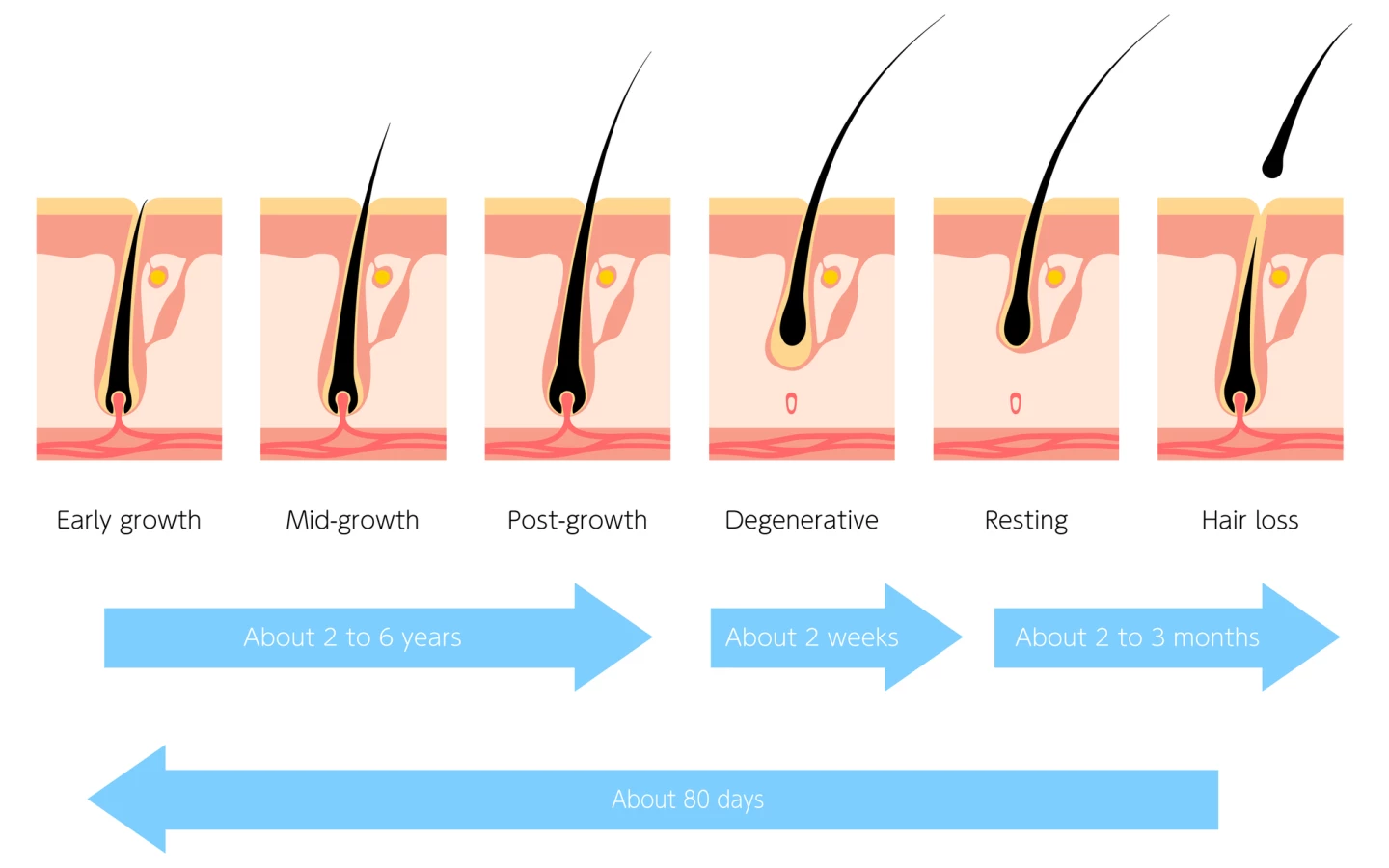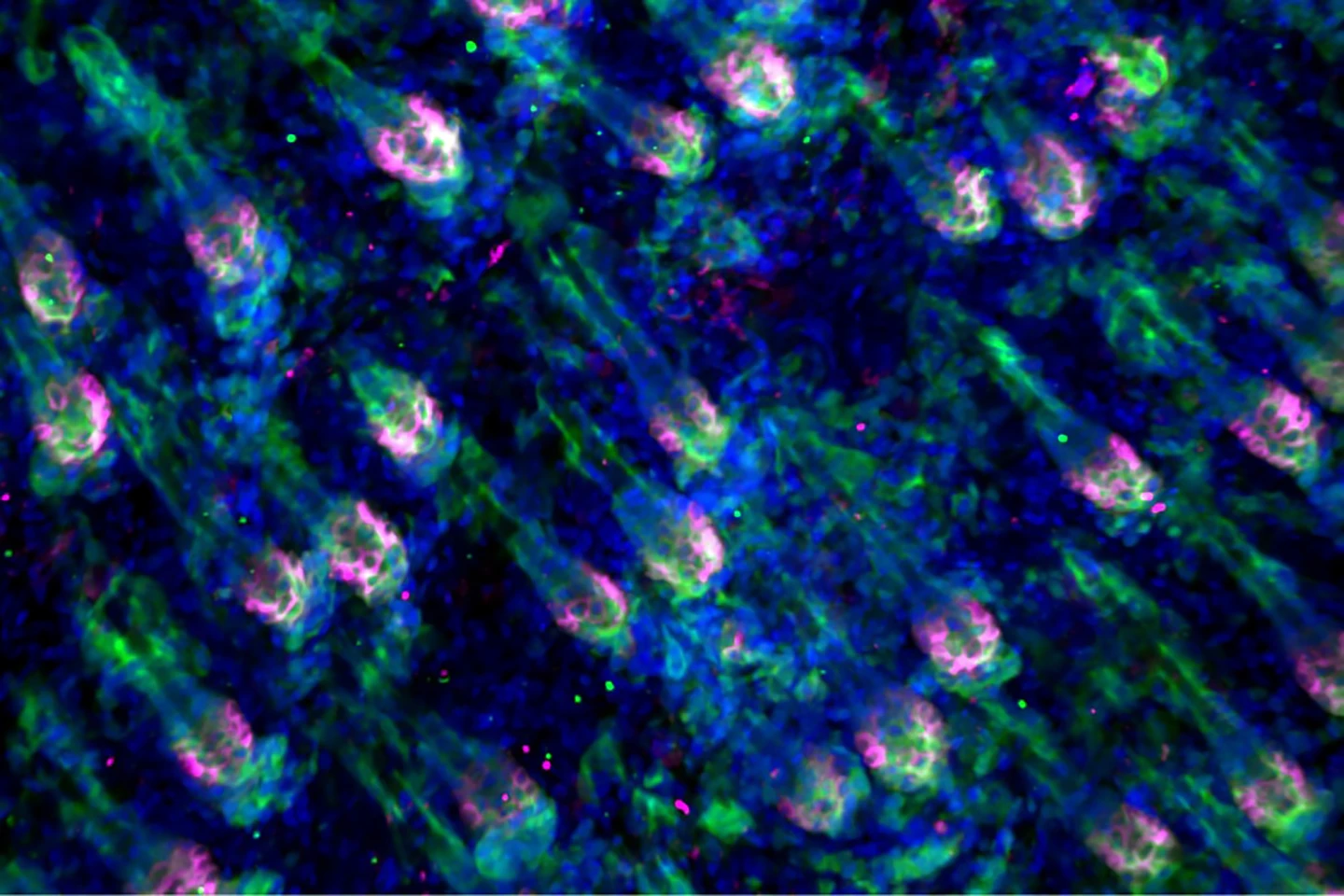When the skin is injured, a stem cell’s survival instincts kick in. New research reveals that a simple amino acid, serine, helps push stem cells to abandon hair growth in favor of wound healing, opening the door to new therapies for chronic wounds.
Hair follicle stem cells (HFSCs) are continuously self-renewing cells responsible for two important bodily functions: maintaining hair’s growth cycles through the regeneration of hair follicles, and tissue regeneration in the skin to aid wound healing.
New research led by Rockefeller University, New York, has explored how a non-essential amino acid, serine, influences the behavior of HFSCs and discovered that when serine levels are low, the cells prioritize wound healing over hair growth.
“Serine deprivation triggers a highly sensitive cellular ‘dial’ that fine tunes the cell’s fate – towards skin and away from hair,” said lead author Jesse Novak, a current MD-PhD student at Weill Cornell Medicine’s Tri-Institutional Program and former PhD student at Rockefeller’s Laboratory of Mammalian Cell Biology and Development. “Our findings suggest that we might be able to speed up the healing of skin wounds by manipulating serine levels through diet or medications.”

As a non-essential amino acid, humans can produce serine themselves, but it is also found in food like meat, poultry, fish, soybeans, nuts, and dairy products. Serine functions as a building block for proteins, is involved in cell proliferation, and various metabolic pathways.
The researchers found that in mice fed a diet low in serine and glycine, another amino acid, HFSCs delayed hair growth and accelerated wound repair, specifically the process of re-epithelialization or restoring the skin barrier. Although serine is classed as a non-essential amino acid, HFSCs struggled if they couldn’t both make and absorb it from external (i.e., dietary) sources.
The researchers identified the integrated stress response (ISR) as the internal cellular program that triggers this shift in HFSC function in response to stress, such as injury or serine deprivation. ISR was activated in HFSCs under serine deprivation, which pushed the cells to become more like epidermal stem cells, which help to rebuild skin, rather than pursuing their typical hair-growing role.
“Most skin wounds that we get are from abrasions, which destroy the upper part of the skin,” Novak said. “That area is home to a pool of stem cells that normally takes charge in wound repair. But when these cells are destroyed, it forces hair follicle stem cells to take the lead in repair. Knowing that, we thought that tracking these skin cells through wound healing presented a very good model for testing if and how metabolites are regulating this process overall.”
The ISR can be thought of like a volume dial. If stress levels are high, such as with an injury or when serine levels are low, the ISR shifts HFSCs away from making hair toward repairing skin. The researchers found that boosting ISR activity in mice using a pharmaceutical agent that mimicked the effects of serine deprivation improved wound healing at the expense of hair regeneration. Conversely, inhibiting activity by blocking ISR sensor proteins reversed these skin-related effects, confirming the central role the ISR has in this process. Similar ISR signatures were found in human skin models at the edge of healing wounds, suggesting the mechanism is evolutionarily conserved, meaning it has remained unchanged across different species over long periods.
“No one likes to lose hair, but when it comes down to survival in stressful times, repairing the epidermis takes precedence,” said Elaine Fuchs, PhD, head of Rockefeller University’s Mammalian Cell and Biology and Development lab and the study’s corresponding author. “A missing patch of hair isn’t a threat to an animal, but an unhealed wound is.”

The researchers tested whether administering a large dose of serine supercharged hair regeneration. Unfortunately for hair loss sufferers, it didn’t. When mice were fed six times the normal amount of serine, their serine levels increased by only 50%. It turns out that the body keeps a tight check on the amino acid.
“However, we did see that if we prevented a stem cell from making its own serine and replenishing its losses through a high-serine diet, we were able to partially rescue hair regeneration,” said Novak.
The researchers’ discovery has some obvious real-world implications, especially in relation to wound healing. Targeting the ISR, through diet or drugs, it may be possible to speed up healing in burn injuries or chronic wounds in people with diabetes. Additionally, understanding the ISR’s role may offer ways of preserving hair regeneration, particularly in stress-related or injury-induced hair loss. However, because cancer cells can also exploit stress response pathways like the ISR, careful control of any future therapies will be critical.
The researchers will continue exploring the potential of serine to speed up wound healing, and plan to test other amino acids to see if they have similar properties.
“Overall, the ability of stem cells to make cell fate decisions based on the levels of stress they experience is likely to have broad implications for how tissue organize their regenerative capacities in times when resources are scarce,” said Fuchs.
The study was published in the journal Cell Metabolism.
Source: Rockefeller University







